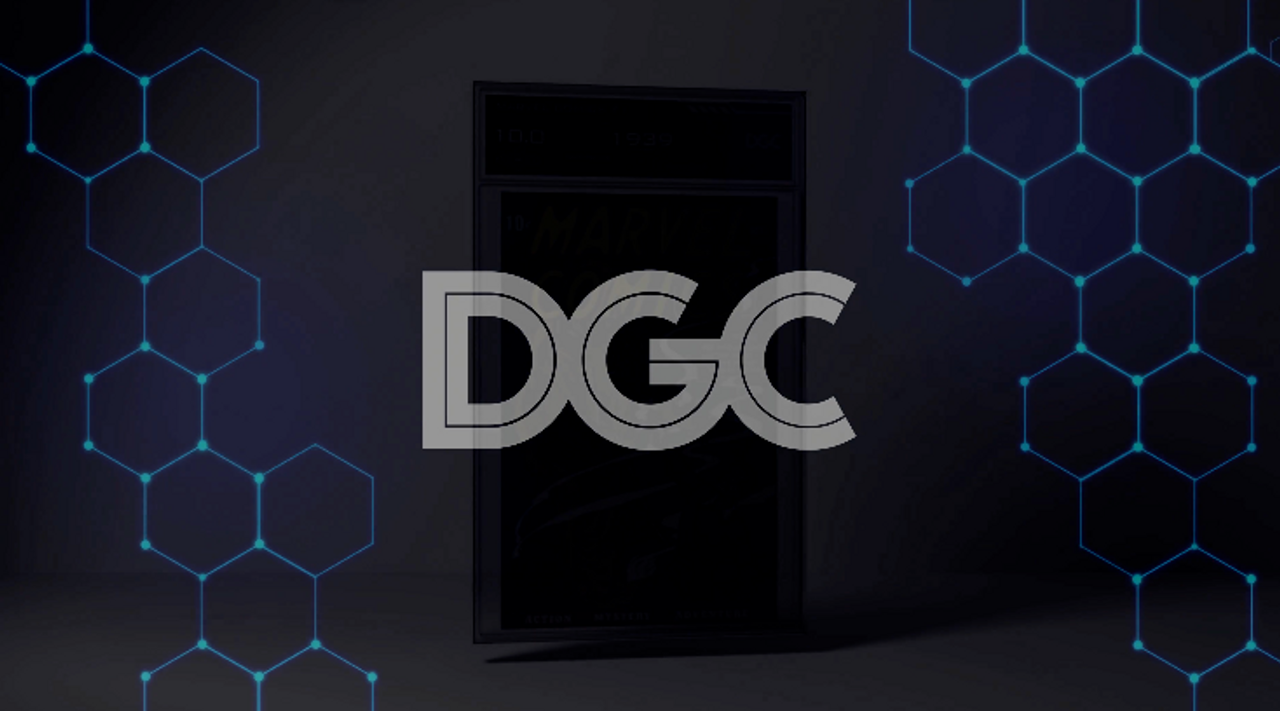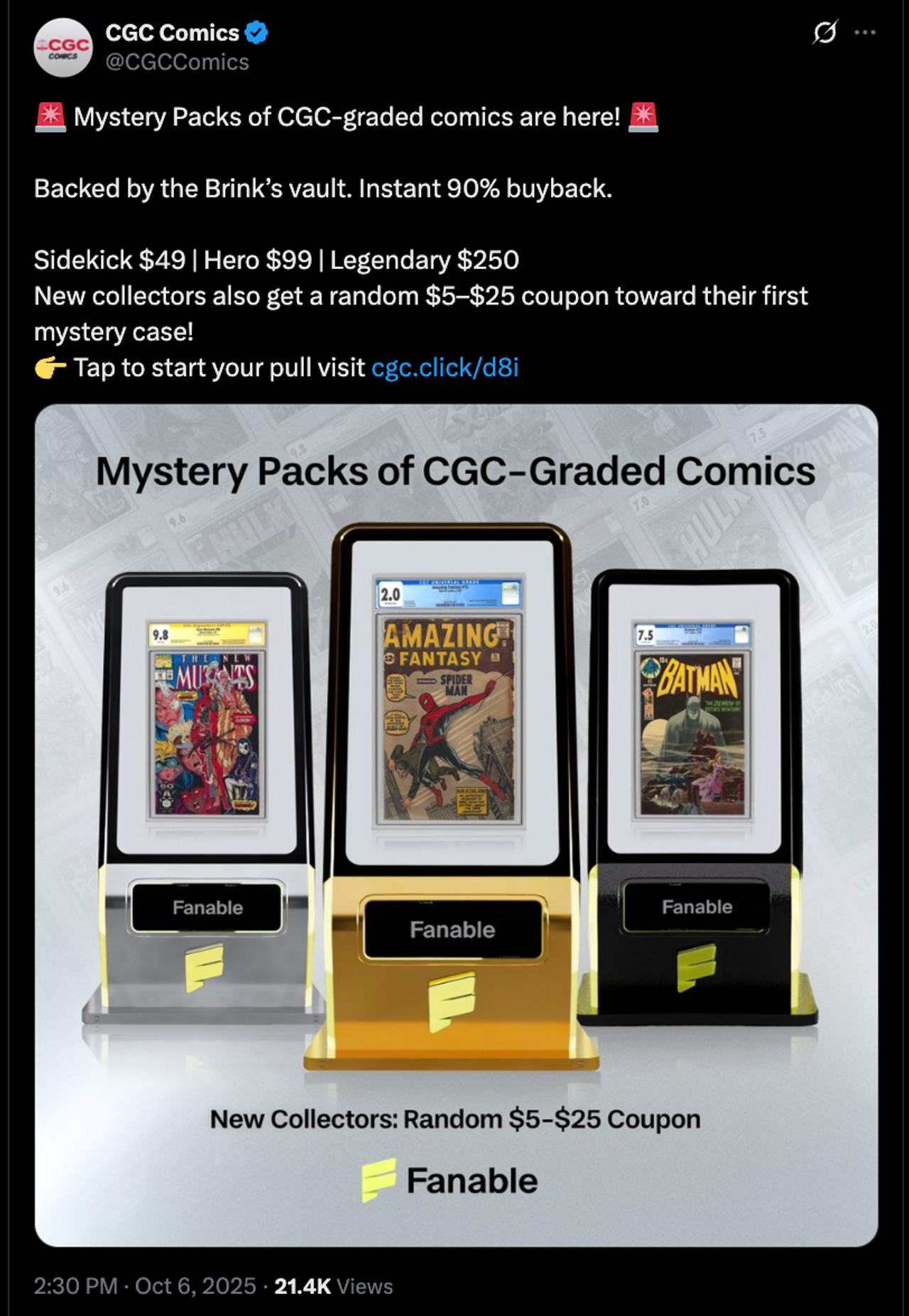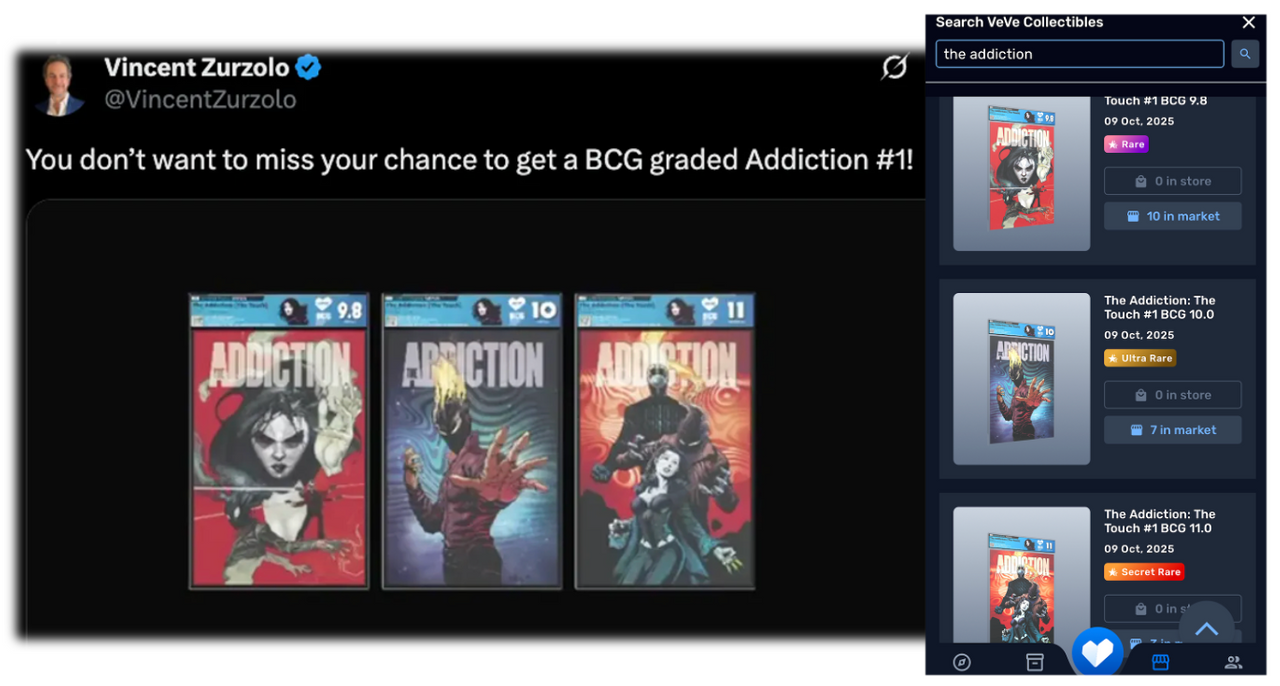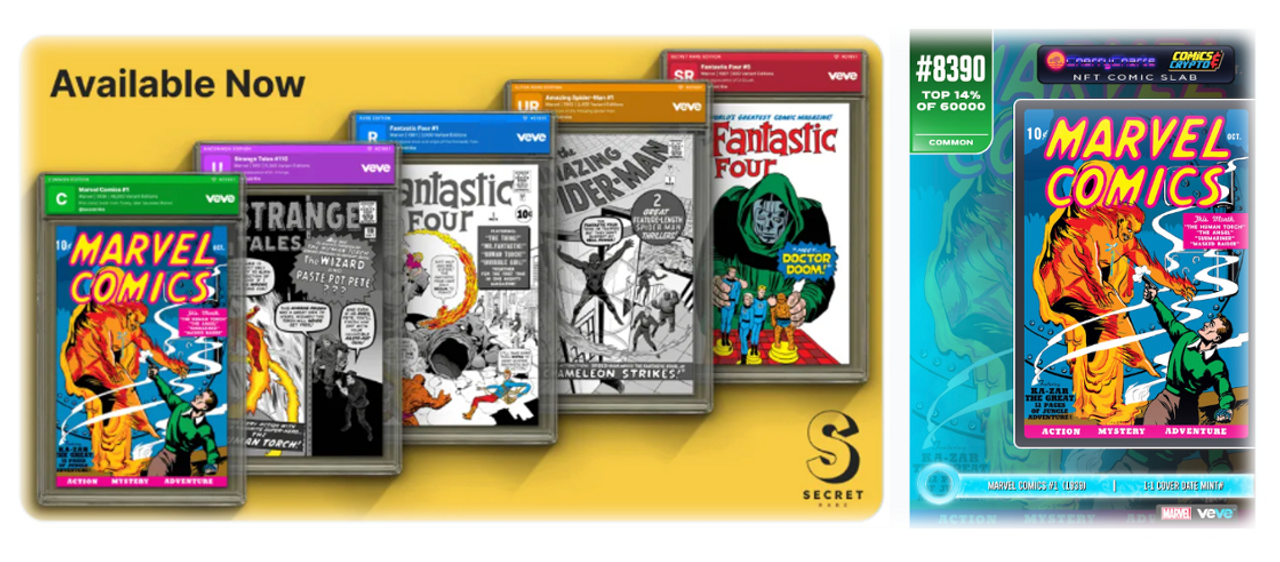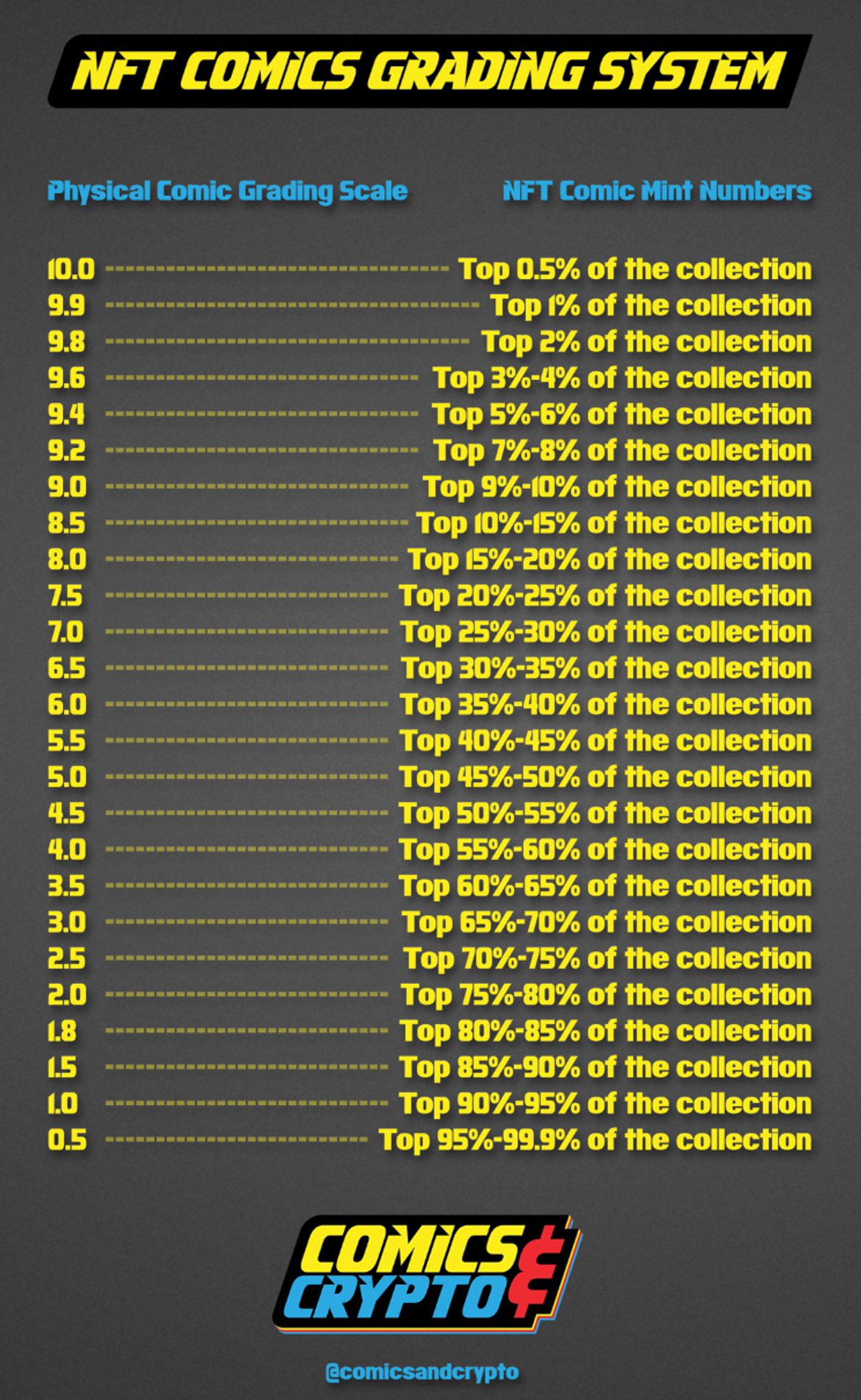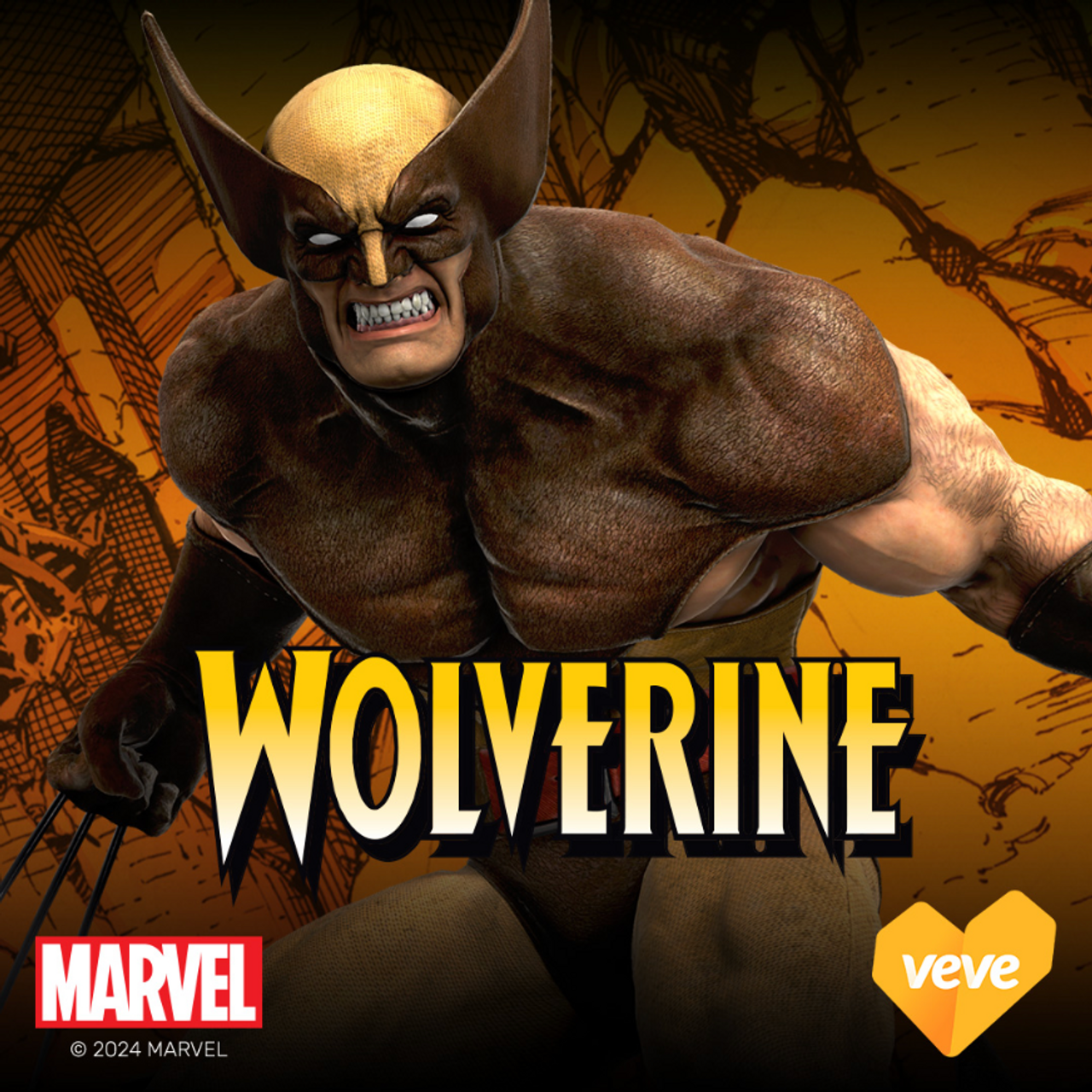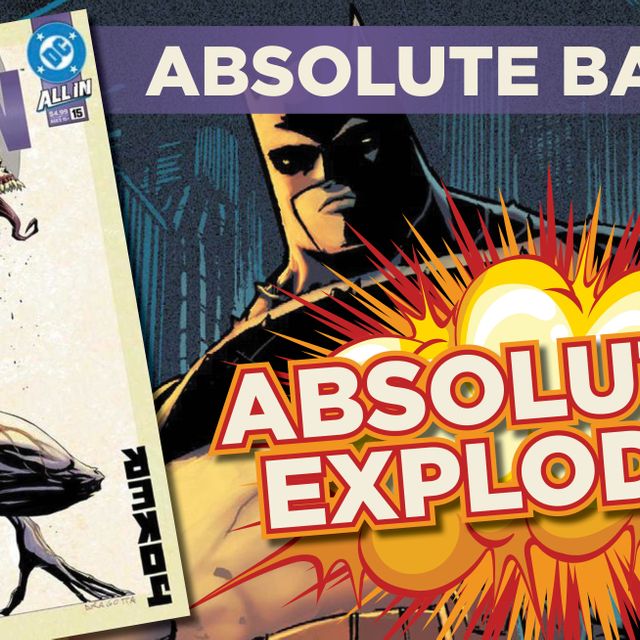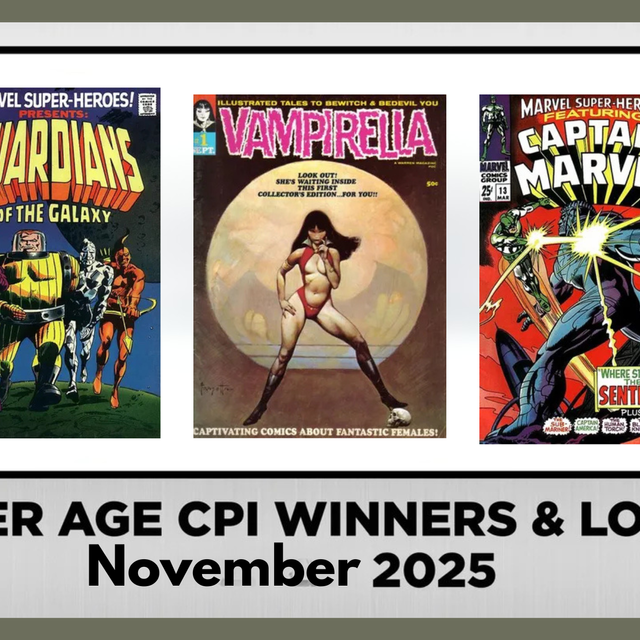Well, what can I say after writing all these digital collectible blogs?
Yes Friends (and of course, Frank!), the time has inevitably come for the grading of digital assets, adding new levels of excitement and collectability to digital ownership.
This was inevitable, no different than just 25 years ago when CGC emerged in 2000 to begin grading physical comics, and the market is about to see multiple entrants in the space, each having their concepts on how to improve the space.
The first CGC graded comic book was Walt Disney Comics & Stories #1 (Dell Publishing, 1940)
CGC Serial #0000001001 (Invoice 0000001, Item 001), originally graded November 9, 1999.
CGC opened to the public on January 1, 2000, bringing the “slab” concept from coins and cards to the comic book market.
For our friendly fudders, know this - some of the the biggest names in the game were quietly researching how best to approach digital grading (see below). Nobody turns a blind eye to an industry now selling billions worth of assets to audiences hungry to grab them up, so let's grade what's happening, shall we?
DIGITAL GRADING COMPANIES
Google ‘digital grading companies’ and what you’ll find of course, are many companies who have been using digital processes to help grade physical assets based on physical attributes - and there are a LOT of 'em. This is not new.
Digital assets, though, do not carry physical grading components like fading, damaged / missing pages, staple fails, etc. So how can they be graded?
Their Edition (Mint) Numbers, and when they were created (minted) on blockchains.
Clearly identified on blockchains, with further numerical signatures often listed (stamped) right on the asset itself, numerology is back in business.
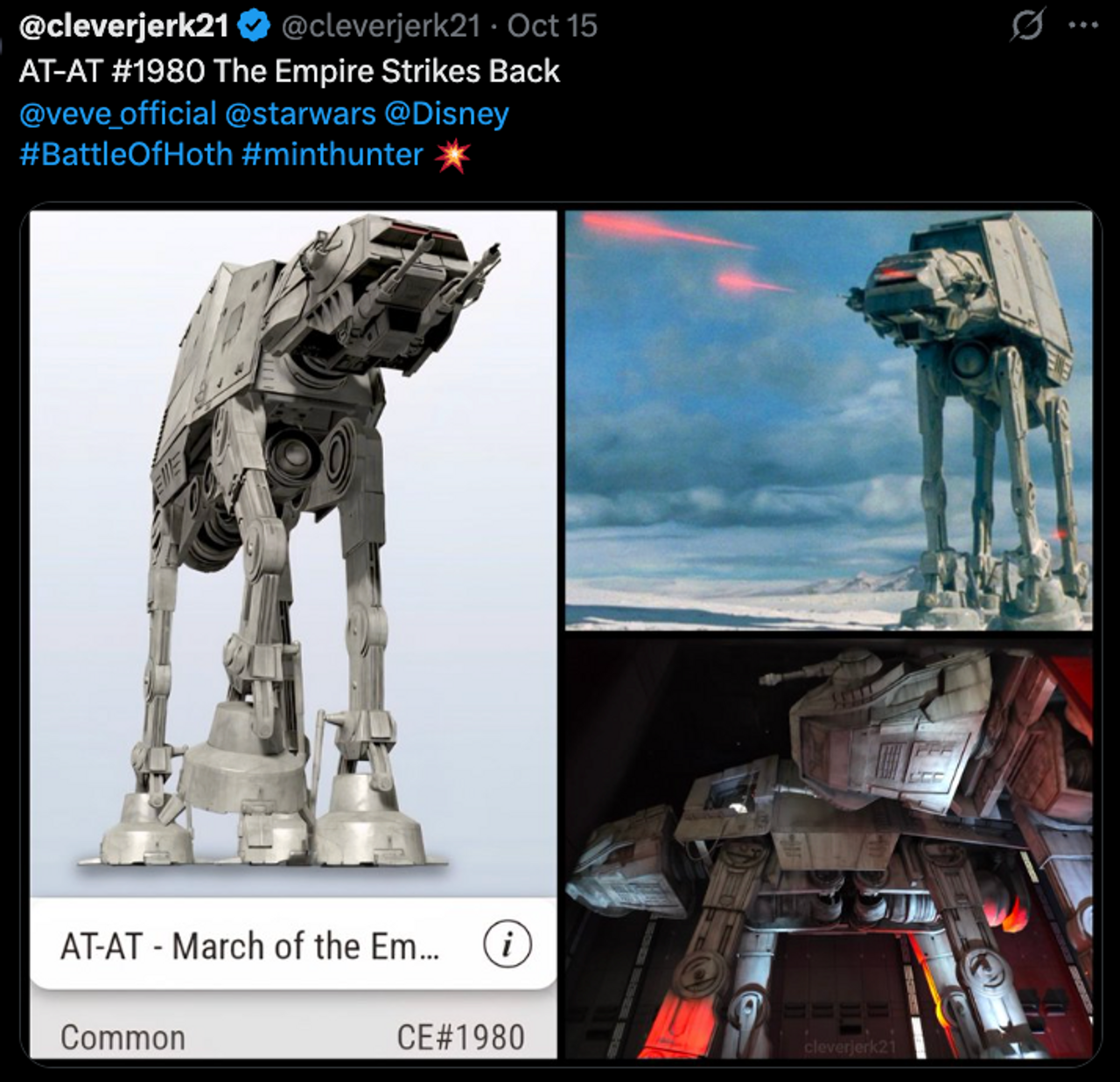
NUMERICAL COLLECTING IS NOT NEW
Millions of collectors over eons have passionately traded palindromes or binaries found on dollar bills, dates of coins or stamps or find tremendous value in angel numbers in any form. So it stands to reason that digital collectibles would share in this excitement, since mints matter - from the lowest to the sequential, historical to fancy.
Like any 3rd party verification system, these companies could help the digital collecting ecosystem grow by providing validations, excitement, hunting opportunities, trading and yes, the potential for higher valuations on certain assets.
They might also just make owning these assets more enjoyable for their collectors. The digital slabs certainly enhance the visual impact, with certificates provided by some companies to validate the grading.
On that note, please be introduced to the World’s First Digital Asset Grading Company,
DIGITAL GRADING COMPANY, or DGC.
Launched in August 2025, DGC received 100’s of submission requests in its first 2 weeks from collectors around the globe. Below is a statement provided by DGC’s Founder, Daniel, outlining their approach:
DGC CONCEPT
Whilst there are several concepts that could be deployed when grading digital assets, DGC has created its version that focuses on the edition number as the means to assign a grade.
DGC's concept is designed to cater for a variety of special mint collecting passions, by having ‘Collector Categories’. Each category has been formed on a particular preference, for example, collectors who enjoy historical related edition numbers may potentially resonate more with our Historical category.
Ultimately, not all digital asset owners will want to participate in having their items graded, which is totally fine. The service DGC offers is for those collectors who do want to see their digital assets in a graded format, with a view of enhancing their collecting experience. The following info provides more insight into how our digital grading process works:
Collector Categories
An integral part of our grading concept is ‘Collector Categories’, which offers collectors a variety of ways to align numerical significance with their preferred, special edition number collecting passion. Each category is represented by a coloured label:
Historic (blue): date relation to publication, release, first appearance, franchise & series
Key (red): relating to key events, publishers, creators, directors, actors & artists
Reference (purple): based upon franchise related topics, numbers & Easter Eggs
Mint (green): covering low & high mints, first public editions, and random mints
Fancy (pink): focuses on sequential, binary, palindrome, bookends & anagrams
Blockchain (black): considers edition numbers per their minting (blockchain creation) order
First Edition (gold): the first edition mint number
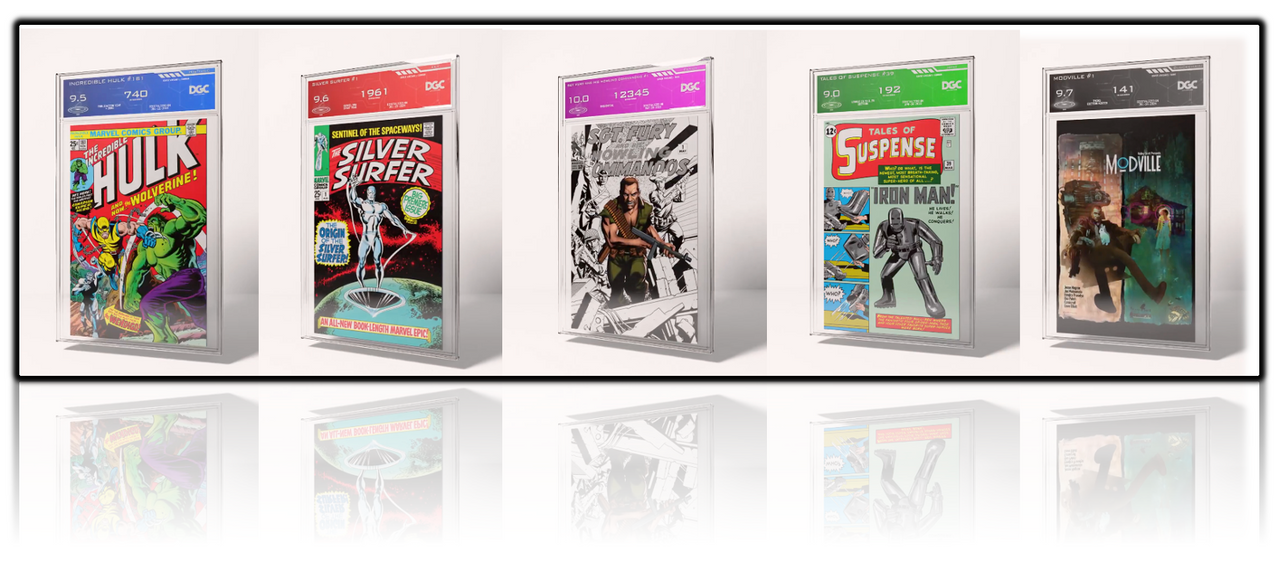
Grading Range
DGC's grading scores range from 0.5 to 10.0, with 0.5 to 9.0 moving in increments of 0.5 and where 9.0 to 10.0 grades move in increments of 0.1. Each comic book cover or collectible variant will have its own catalogue and be graded in its own right, whilst each Collecting Category will only have the the potential to achieve one 10.0, creating a ‘one of one’.
Depending on the edition number spread, some items may have seven individual 10.0 grades (e.g. one 10.0 from each Collecting Category), where some items may have fewer, even no 10.0's available if the applicable mint number is not assigned to that variant.
For instance, some NFT platforms remove unsold editions via a burning mechanism, where a 10.0 applicable edition number could potentially be burned in the process.
Grading Process
Following a client submission for grading, DGC first logs the details of the item to be graded and conduct relevant research & fact-checking. Our grading team then assess the edition number assigned to that item, applying our strict numerical grading formula to state what grade is achieved. From there, our digital experience team take over and build the item within a graded format, using 3D asset building software.
Once complete, DGC conducts quality control by examining the graded item before delivering the visuals of the graded asset back to the client. DGC graders apply our strict numerical formula when grading an item. The more special we deem the edition number for the item being graded, the higher the stated grade.
Future Features
DGC believes the digital collecting space has quickly evolved and offers many exciting opportunities, where the introduction of a digital grading service is no different. DGC's initial service roll-out is focused on grading digital comic books, with subsequent NFT assets such as collectibles, trading cards, stamps, artwork, vehicles, memorabilia, tickets & more to be rolled out over time.
Built within DGC's roadmap is the exploration of customized grading assets, set & collection grading, and white label service.
Further packages & product offerings are pending, providing further enjoyment across wider collecting experiences, such as Metaverse show-rooming, set collections and more. Demand is growing quickly, which will influence future service offerings and turnaround scheduling.
DGC's mission as a modern, digital grading company is to show an exciting new dynamic to the collectibles industry, enhancing collector experience for those that wish to participate.
As Todd McFarlane so beautifully stated at WonderCon 2024 on his involvement in digital assets to those who felt compelled to fud, “if you don’t like broccoli, just walk on by it at the grocery store…but don’t complain to the manager they shouldn’t sell broccoli". It's such a great speech - check it on YOUTUBE!
SLABBING THIS CHAT UP
Obviously, digital asset grading won’t be for everyone.
Even some in the digital assets community are at mixed ends, where many will prefer to keep their ‘raw’ items ungraded, while others are lining up just to see their beloved assets in a digital slab, 3D animated & prepped for future display in metaverses & authentication unchain. Not everyone has their physicals graded either...
Yet, if you think about the comparisons to physical grading, this makes so much sense.
People have physical reprints & facsimiles graded just because they look great on a shelf.
Digital assets in digital slabs look fantastic (see below).
Graded & slabbed assets often resell for premiums, which is likely to happen with digital assets.
Grading edition/mint numbers can educate more people on a wider array of collecting options.
Many of us simply like to flex our assets, where grades & slabs can definitely help.
Digital assets come without the issues of plastic use, expensive shipping / insurance costs, challenges selling and of course, taking up space.
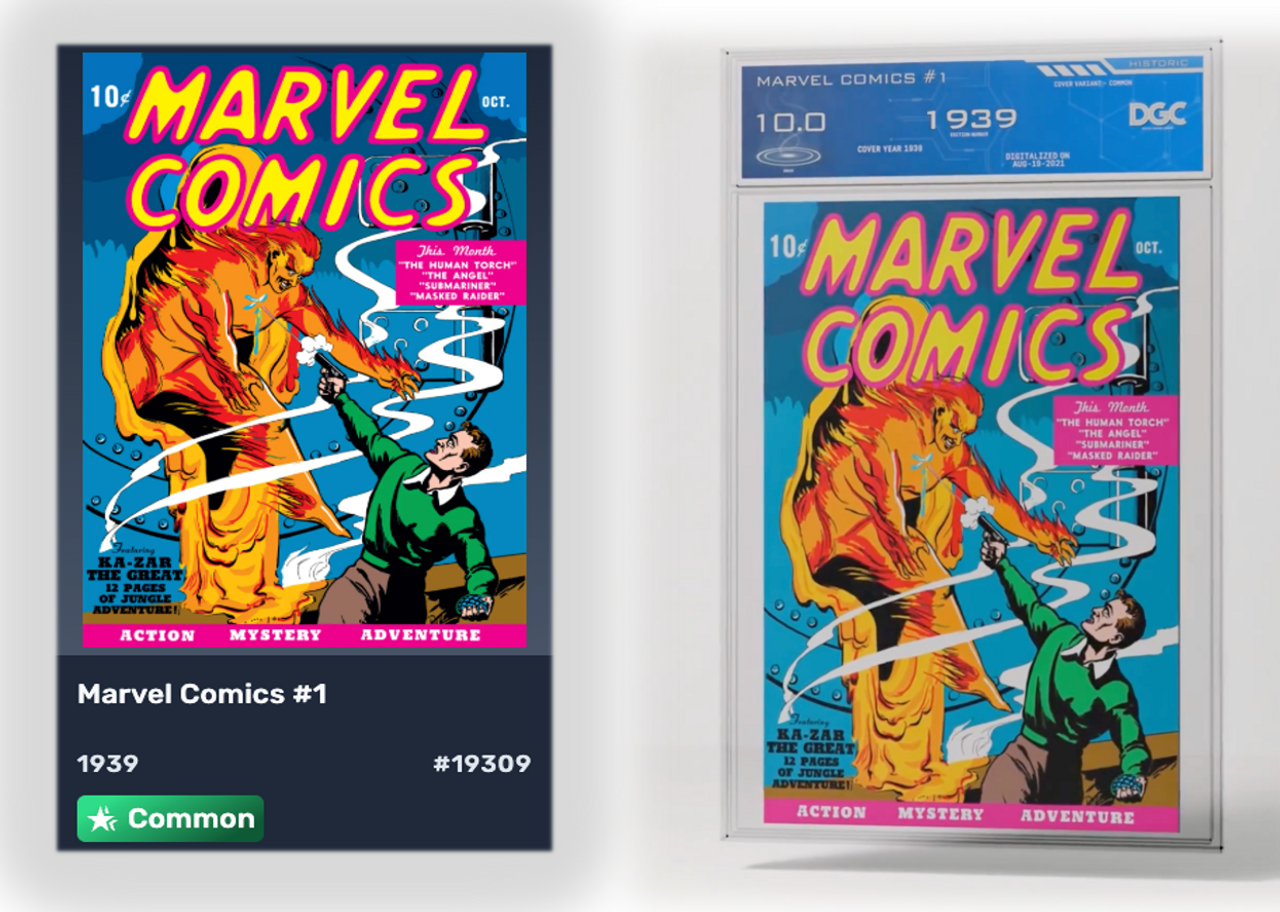
RIGHT: How That Same VeVe Marvel Comics #1 Appears in a DGC Digital Slab (fully animated too)
I’m sure CGC had 'a few' naysayers when they launched comic book grading back in 2000. People were mad at Microsoft for launching email too. While 0.00% of anyone has to participate in grading, constructive feedback is always encouraged...we won't stop digital grading from happening, but we can certainly help these brands grow along with their fandom desires!
YUP, CGC ARE IN THE DIGITAL ASSETS & GRADING SPACE TOO
ICYDK, they recently partnered with FANABLE.IO, who vault your physical, graded assets while providing an NFT of that specific item, tokenizing it for resale or safe keeping, so CGC is 100% connected to Digital Collectibles!
Then, METROPOLIS COMICS's own Vincent Zurzolo posted about their all new BGC Digital Graded ADDICTION #1 Comic at NYCC '25, with their graded digital counterparts already listing in the VeVe marketplace - and they all look pretty slick too, BTW!
The Metropolis team of graders has over 100 years of experience combined.
They've graded hundreds of thousands of comics over the last 35 years, where both CEO & COO of Metropolis Collectibles, Stephen Fishler and Vincent Zurzolo, are internationally recognized experts in comic book evaluation.
WHICH IS GREAT! How best to have a new service in a new asset class flourish and capture the interest and support of its community, than to have it endorsed directly from that community!
PLUS YOUR CHANCE TO WIN A FREE, LICENSED, GRADED DIGITAL COMIC!
If that all wasn't enough, here is your chance to give it a try with DGC GIVEAWAY TIME!!!
To enter, simply follow DGC on X: @DGCgrading. Between now & Christmas Eve, DGC will be giving away multiple comics & collectibles. Winners to be drawn at random & will receive the comic / collectible as well as the graded assets, starting with these 5 superb comics:
Iron Man #1: Edition 1963 - Iron Man FA Year
Marvel Rivals #1: Edition 61 - Marvel Era Start Year
Thor #364: Edition 185 - Lowest 2.5% to 5.0 Edition
Marvel Preview #7: Edition 6666 - Angel Edition Number
Nova #1: Edition 1976 - Publication Year
It’s a fast-changing world thanks to incredible advancements in technology, digital media, blockchains & AI, and whether you’ll jump in or not, the future of the entire comic book universe stands to benefit enormously from new ideas such as these.
Congratulations DGC for taking the leap as the first digital asset grading service, as this is really exciting to watch play out.
I’ve submitted & received a few of my fave digital comics back that look outstanding in their new 3D, animated formats complete with digital grading cards (DGC's "certificate"). And the best part? They're also in my phone, with my collection with me everyday!
P.S.
I'd be unjust not mentioning 3 memorable, very early-adopter platforms that were significant parts of my digital collecting journey, Secret Rare Slabs (shown on left below) CherryCharts (right image) and Comics&Crypto.
These fun services popped up in the early days of digital assets (maybe late 2021 / early 2022), allowing users to input their asset name, mint number, variant cover & some brief notes on the item. "Grading" was simply based on mint number, where the lowest received % grades.
These were free services, but did not account for 'special / fancy / historical' type attention to numbering mentioned above, or 3rd party validation. That said, I held MANY and had a BLAST making & sharing them. In fact at their peak, CherryCharts had produced roughly 140,000 such slabs, clearly indicating an interest was there, but the timing for each of these entities was a bit too early in the game. So if you guys see this blog, thanks for some awesome memories!!!
Our good friends at Comics&Crypto had also took a stab at creating one of the first digital grading systems on record. As VeVe provides bonus points in their reward program (MCP), the thought was to assign grades based purely on low your minted item's edition number was. However, this too didn't account for all those fun fancy & fact numbers that are so highly coveted today:
Thanks for Reading!
New VeVe Users: Sign Up & Get $10 USD FREE to Start! Click the Banner below & own your own Licensed Digital Comics & Collectibles!


